Abstract
In patients with hemolytic anemia associated with spherocytosis, differential diagnosis has to be made whether the hemolysis is immune-mediated or of non-immune origin. We report a case of hereditary spherocytosis in a 12-yr-old male child, in whom flow-assisted diagnosis was made. In this case, diagnosis was not determined because routine laboratory workups for hereditary spherocytosis yielded discrepant results: positive osmotic fragility test, positive direct antiglobulin test, and normal result in the red cell membrane protein sodium dodecyl succinimide polyacrylamide gel electrophoresis. However, all flow cytometry-based tests, such as osmotic fragility, direct antiglobulin, and eosin 5-maleimide binding test, yielded results compatible with hereditary spherocytosis. Additionally, in family study, the results of eosin 5-maleimide binding test suggested his disease being hereditary. In cases with diagnostic difficulties, flow cytometry may be used as an alternative tool, which can provide additional information in the differential diagnosis of hemolytic anemia with spherocytosis.
REFERENCES
1.Gallagher PG., Forget BG., Lux SE. Disorders of the erythrocyte membrane. Nathan DG, Orkin SH, editors. Nathan and Oski's hematology of infancy and childhood. 5th ed.Philadelphia: WB Saunders;1998. p. 544–664.
2.Bolton-Maggs PH, Stevens RF, Dodd NJ, Lamont G, Tittensor P, King MJ; General Haematology Task Force of the British Committee for Standards in Haematology. Guidelines for the diagnosis and management of hereditary spherocytosis. Br J Haematol. 2004. 126:455–74.
4.Lee YK., Cho HI., Park SS., Ra E., Chang YH., Hur M, et al. SDS-PAGE analysis of red cell membrane proteins in hereditary hemolytic anemia. Korean J Hematol. 1999. 34:559–67. (이영경, 조한익, 박성섭, 나은경, 장윤환, 허미나 등. 유전성용혈성빈혈에서 SDS-PAGE를 이용한 적혈구막 단백성분분석. 대한혈액학회지 1999;34:559-67.).
5.King MJ., Telfer P., MacKinnon H., Langabeer L., McMahon C., Darbyshire P, et al. Using the eosin-5-maleimide binding test in the differential diagnosis of hereditary spherocytosis and hereditary pyropoikilocytosis. Cytometry B Clin Cytom. 2008. 74:244–50.

6.King MJ., Smythe JS., Mushens R. Eosin-5-maleimide binding to band 3 and Rh-related proteins forms the basis of a screening test for hereditary spherocytosis. Br J Haematol. 2004. 124:106–13.

7.Kedar PS., Colah RB., Kulkarni S., Ghosh K., Mohanty D. Experience with eosin-5′-maleimide as a diagnostic tool for red cell membrane cytoskeleton disorders. Clin Lab Haematol. 2003. 25:373–6.

8.King MJ., Behrens J., Rogers C., Flynn C., Greenwood D., Chambers K. Rapid flow cytometric test for the diagnosis of membrane cytoskeleton-associated haemolytic anaemia. Br J Haematol. 2000. 111:924–33.

9.Won DI., Suh JS. Flow cytometric detection of erythrocyte osmotic fragility. Cytometry B Clin Cytom. 2009. 76:135–41.

10.Won DI., Jung OJ., Lee YS., Kim SG., Suh JS. Flow cytometry antibody screening using pooled red cells. Cytometry B Clin Cytom. 2010. 78:96–104.

11.Kerr R., Rawlinson PS., Cachia PG. Direct antiglobulin test negative, non spherocytic autoimmune haemolytic anaemia. Clin Lab Haematol. 2000. 22:365–7.

12.Boyd AS. Hereditary spherocytosis. Am Fam Physician. 1989. 39:167–72.
13.Ruddy S. Complement. Rose NR, de Macario EC, editors. Manual of clinical laboratory immunology. 4th ed.Washington, DC: American Society for Microbiology;1992. p. 114–23.
14.Downes KA., Shulman IA. Pretransfusion testing. Roback JD, Combs MR, editors. Technical manual. 16th ed.Bethesda: American Association of Blood Banks;2008. p. 437–63.
15.Leger RM. The positive direct antiglobulin test and immune-mediated hemolysis. Roback JD, Combs MR, editors. Technical manual. 16th ed.Bethesda: American Association of Blood Banks;2008. p. 499–521.
16.Mentzer WC., Lubin BH. Red cell membrane abnormalities. Lilleyman JS, Hann IM, editors. Pediatric hematology. 2nd ed.London: Churchill Livingstone;1999. p. 257–83.
Fig. 1.
Peripheral blood smear at 12 yr of age. Microspherocytes accounts for ~50% of red cells. A few nucleated red cells and many polychromatic macrocytes are seen (Wright-Giemsa stain, ×200).
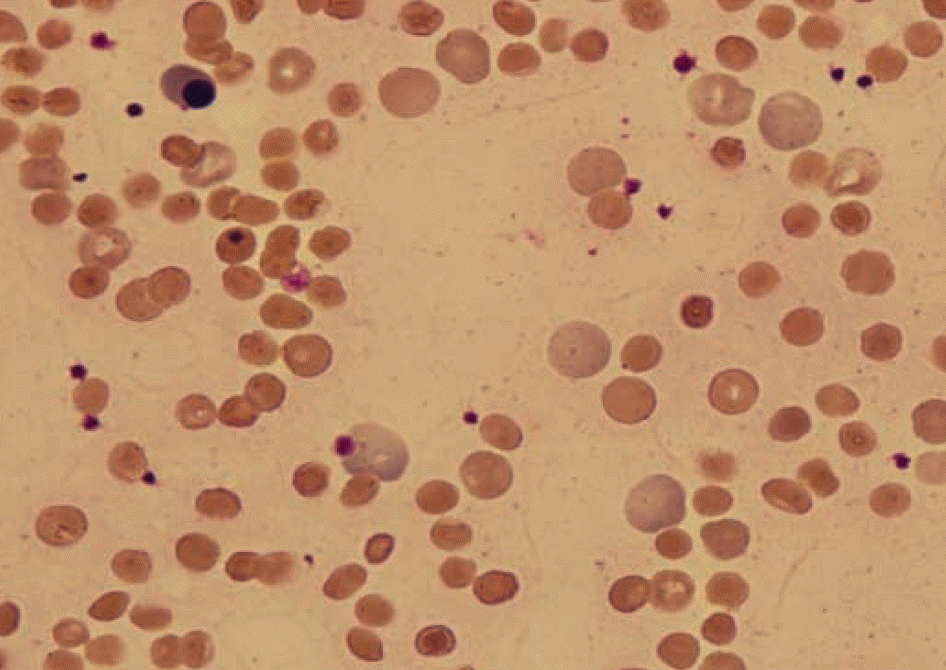
Fig. 2.
Osmotic fragility test at 10 yr of age. The patient (thick lines) showed increased osmotic fragility as compared with a healthy control (dashed lines) in both immediate and 24 hr-incubated samples. Reference ranges are indicated in thin lines. The initial osmotic fragility test performed at 6 yr of age had also showed same patterns.
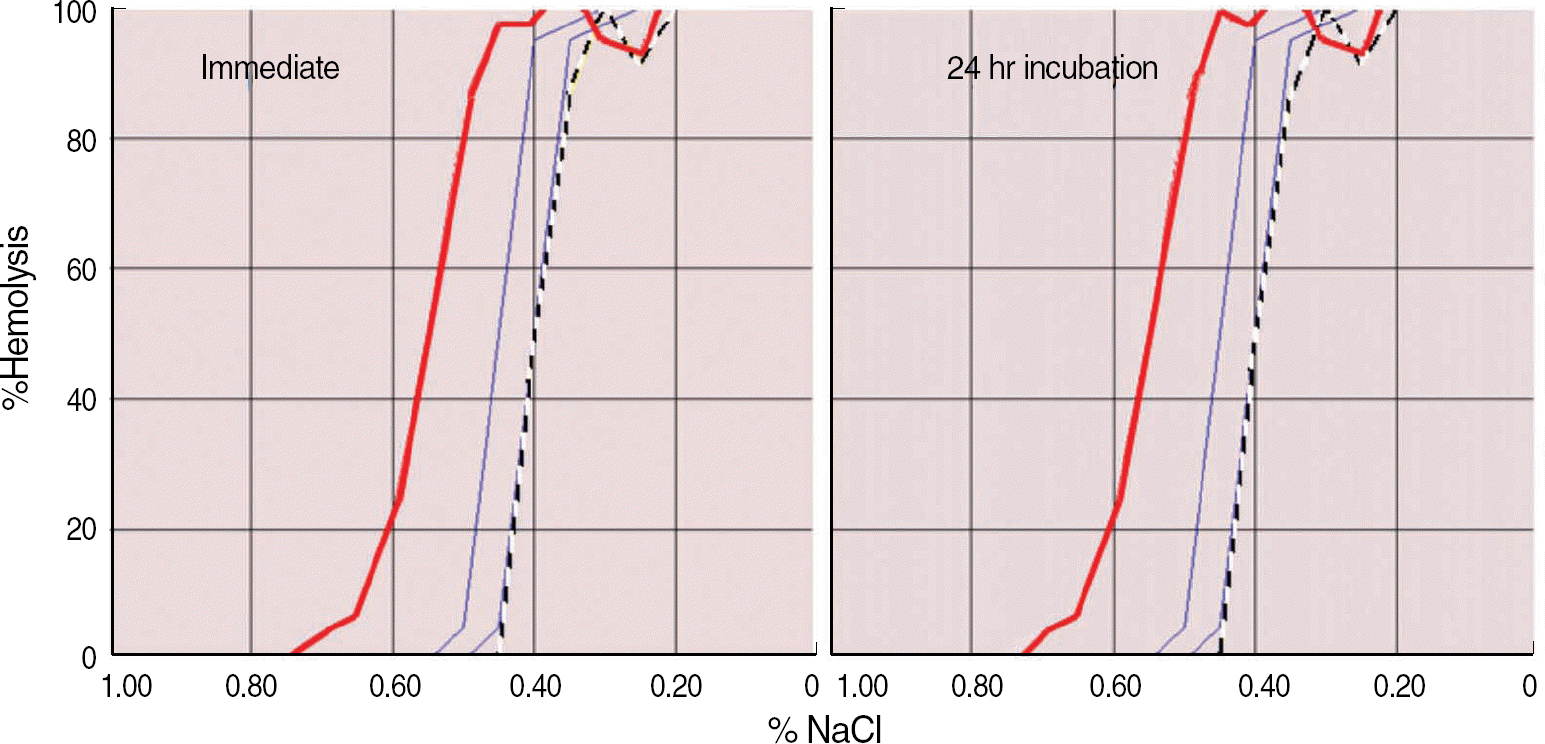
Fig. 3.
Laboratory findings associated with hemolytic anemia during last 2 yr. Steroid therapy was tried in every admission.
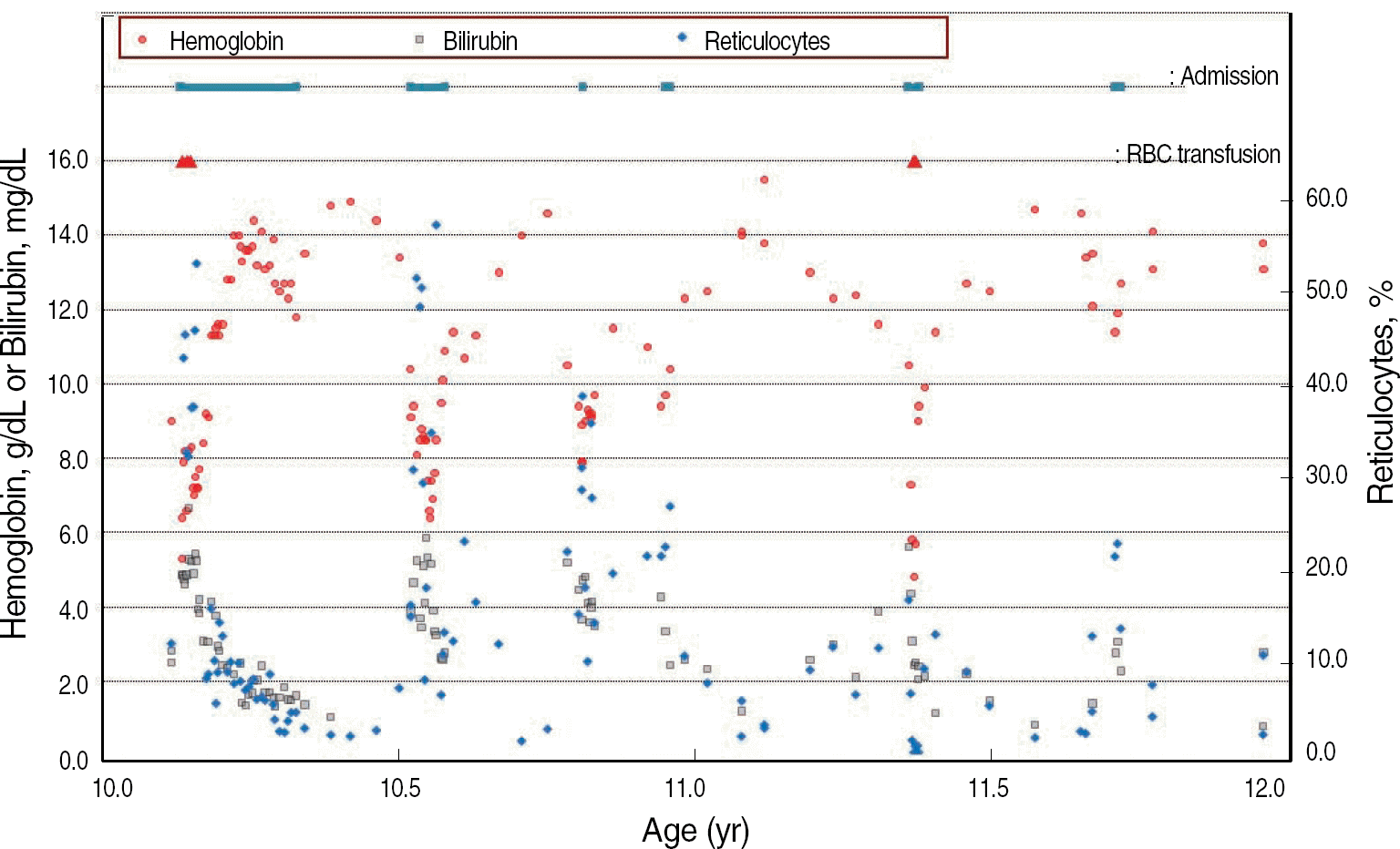
Fig. 4.
Flow cytometric osmotic fragility test at 12 yr of age. The events after DW spiking are indicated in red. Post DW spiking, a main subset of the patient showed both a less increased FSC and a less decreased SSC than that of a healthy control (white arrows). On the patient's FSC/SSC plot, a subsidiary subset showing largely increased FSC appears to be reticulocytes (yellow arrow on the right). The control/patient ratio of residual red cells was 4.68 (89%/19%), which was determined as increased osmotic fragility (cutoff 3.0).
Abbreviations: FSC, forward scatter; SSC, side scatter; DW, deionized water.
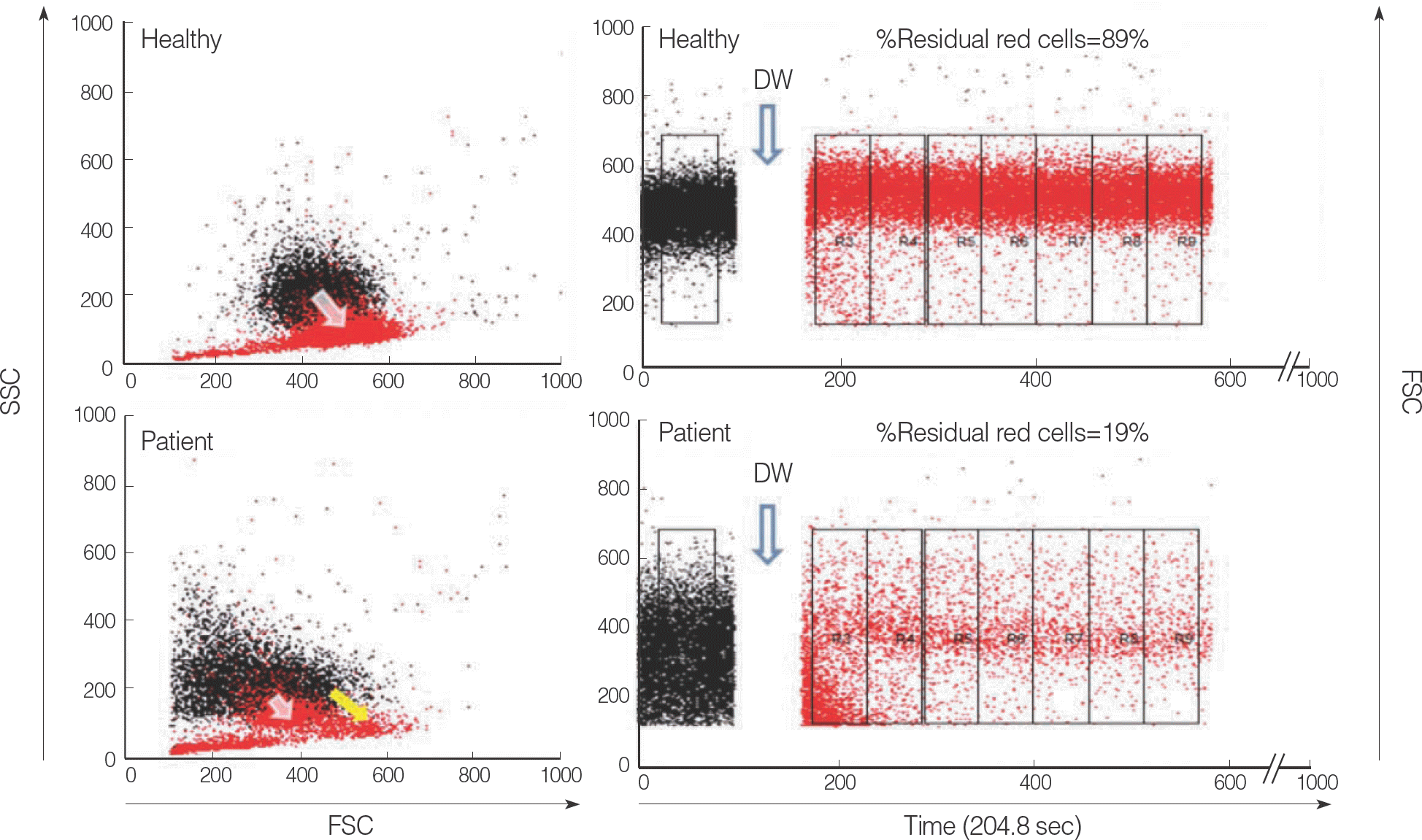
Fig. 5.
Direct antiglobulin test by flow cytometry at 12 yr of age. Patient's MFIs were below the cutoff MFIs on both the anti-IgG and anti-IgM histogram of red cells (4.97 and 4.99, respectively), and these values are within normal limits.
Abbreviation: MFI, mean fluorescence intensity.
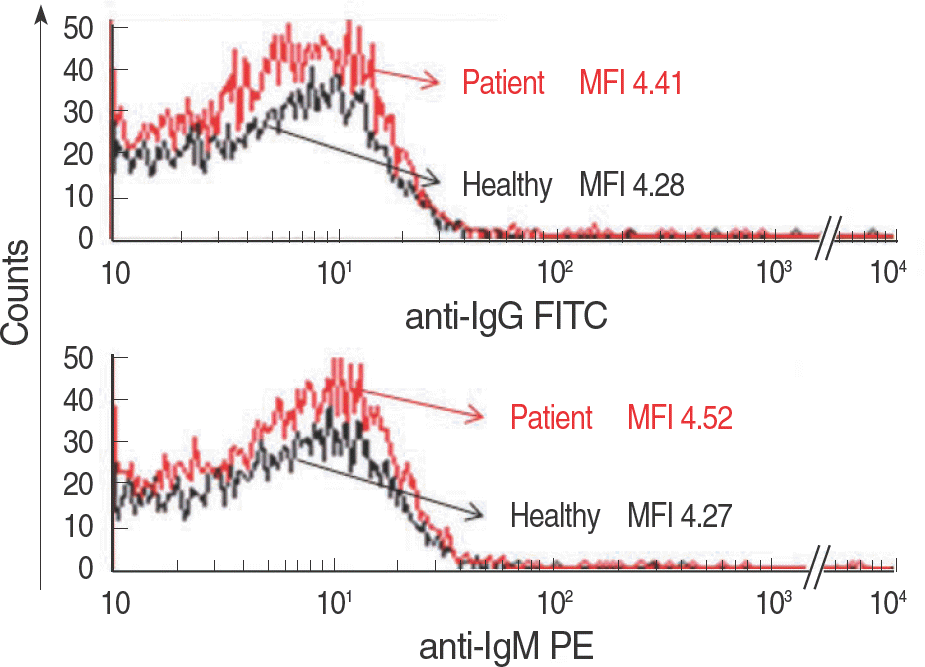
Fig. 6.
Eosin 5-maleimide (EMA) binding test at 12 yr of age. (A) Fluorescence microscopy. EMA-bound red cells show green fluorescence. (B) Flow cytometry. Patient's MFI (443) was below the cutoff (523-3×21=460).
Abbreviations: FSC, forward scatter; SSC, side scatter; MFI, mean fluorescence intensity, EMA, eosin 5-maleimide.
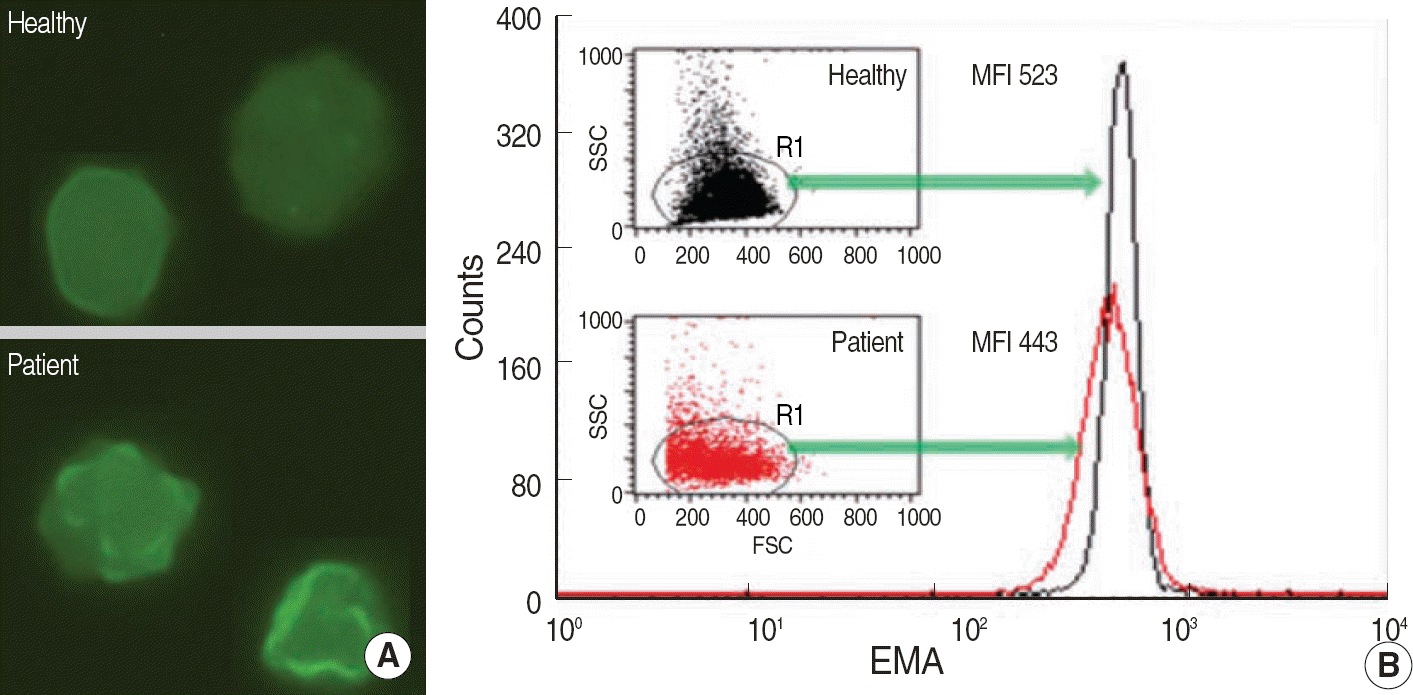
Fig. 7.
Genogram of the patient's family. The results of hematologic and EMA binding test are provided. His elder brother also showed significantly decreased MFI value compared to the cutoff value in this batch of test. As EMA binding test for the patient's family was performed in a different batch from the patient, direct comparison of MFI values between the patient's in Fig. 6 and his family's in this figure is not possible.
Abbreviations: EMA, eosin 5-maleimide; MFI, mean fluorescence intensity.
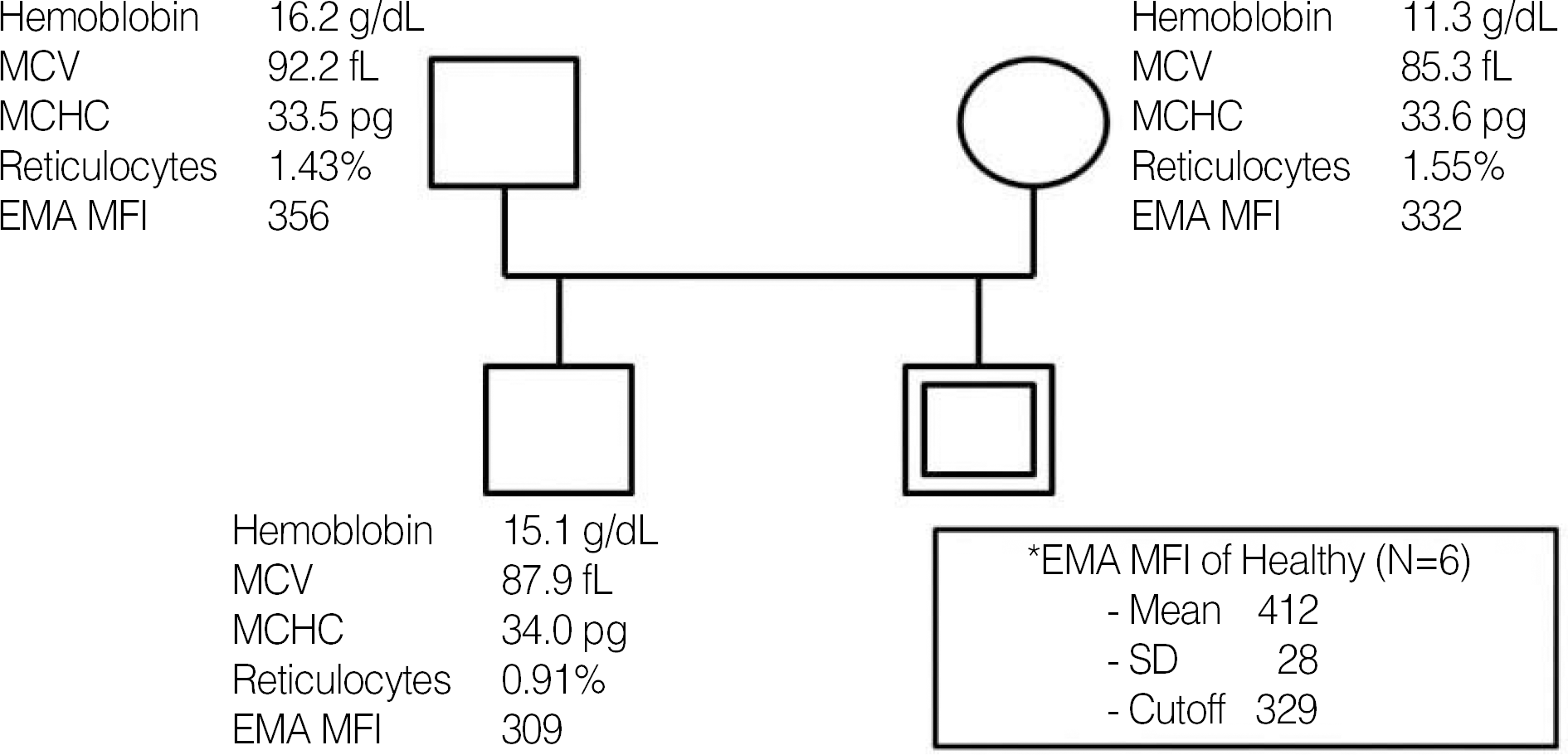
Table 1.
Consecutive results of antiglobulin tests and other associated tests in this case




 PDF
PDF ePub
ePub Citation
Citation Print
Print


 XML Download
XML Download